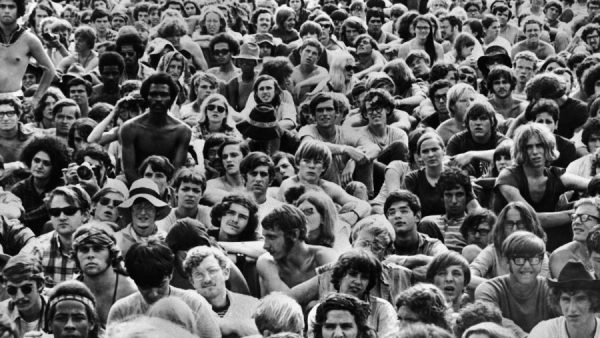Readers aware of the many 50th anniversaries marked this year or who themselves recall the year, know that “noteworthy,” “momentous,” and “pivotal” can be applied to the events of 1969 without hyperbole. Woodstock, the Apollo 11 moon landing, the Stonewall riots, and the inauguration of Richard Nixon might readily come to mind. Perhaps less known but no less significant were the launching of PBS—and Sesame Street—ARPANET, the internet’s precursor, or the first ATM. The Chicago Seven went on trial for their role in the violence at the 1968 Democratic convention.

The draft lottery for Selective Service registration was instituted. A quarter million marched on Washington to protest the war in Vietnam, and the first withdrawals of troops from southeast Asia commenced. Hells Angels providing concert security at Altamont Speedway killed a man during the Rolling Stones’ set, and Charles Manson and his followers murdered Sharon Tate and four others in California. An X-rated film—Midnight Cowboy—was released to critical acclaim and went on to win Best Picture. The Beatles’ last public performance happened on the roof of Apple Records.
Times were changing in Fort Collins and at CSU. William Morgan ended his 20-year run as CSU president. On July 1, Dr. Adrian “Ray” Chamberlain stepped into the role, and enrollment reached 16, 252 that fall. Students boycotted the $8 fee for Hughes Stadium they were assessed, incensed that they had been deceived about funding for the new facility. Protests for racial equality were ongoing throughout the spring semester, including a sit-in at President Morgan’s residence during a day of events held by the Black Students Alliance and Mexican-American Committee for Equality.
As of the April city election, Fort Collins was no longer a “dry town,” as voters approved the sale of liquor within the city limits. The Rolling Stones played Moby Arena for 10,000 fans in November. Women achieved a measure of equality when housing rules were amended to require that both male and female first-year students who were unmarried and under age 21 must live in residence halls.
Along with increased enrollment at the university, the population of Fort Collins had risen in a decade by nearly 20, 000 to around 43, 000. One sign of the growth in the city and campus was the installation of a traffic light at the intersection of Shields and Elizabeth streets.
The English department conferred 71 bachelor’s, 30 master’s of arts and 10 masters of arts in teaching degrees in 1969. The 1969 catalog lists 42 English faculty, which likely does not include all of the 10 new faculty hired that year. Two courses appearing for the first time in that catalog were E236, Literature of Social Protest, and E431, Adolescents’ Literature. The content of E236 was described as “American social problems and alienation of the individual by contemporary novelists and playwrights,” while E431 was “Primarily for English, speech and Humanities majors preparing to teach English. Relating adolescents and their books to the verities of literature, stimulating development of critical ability, appreciation and taste.”
Back to the English@80 main page